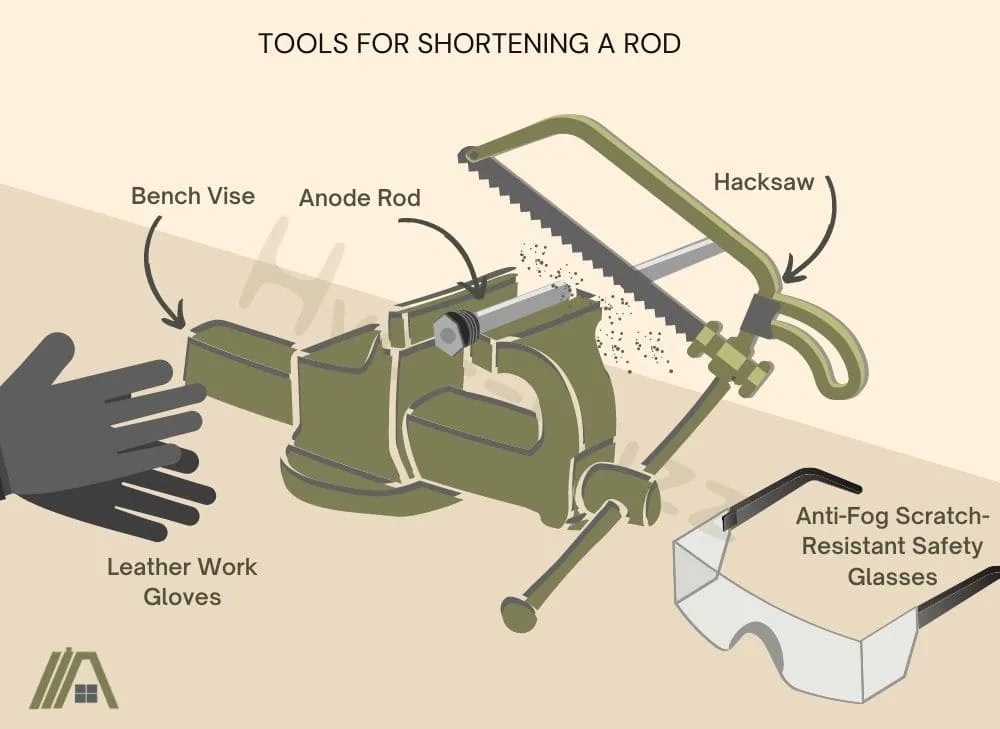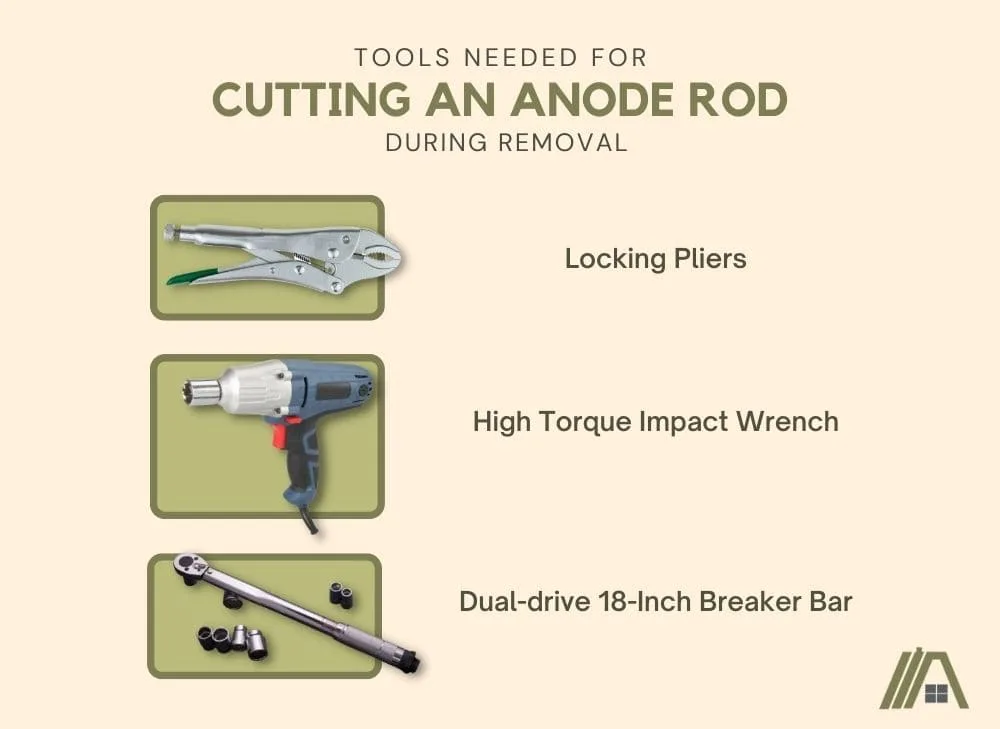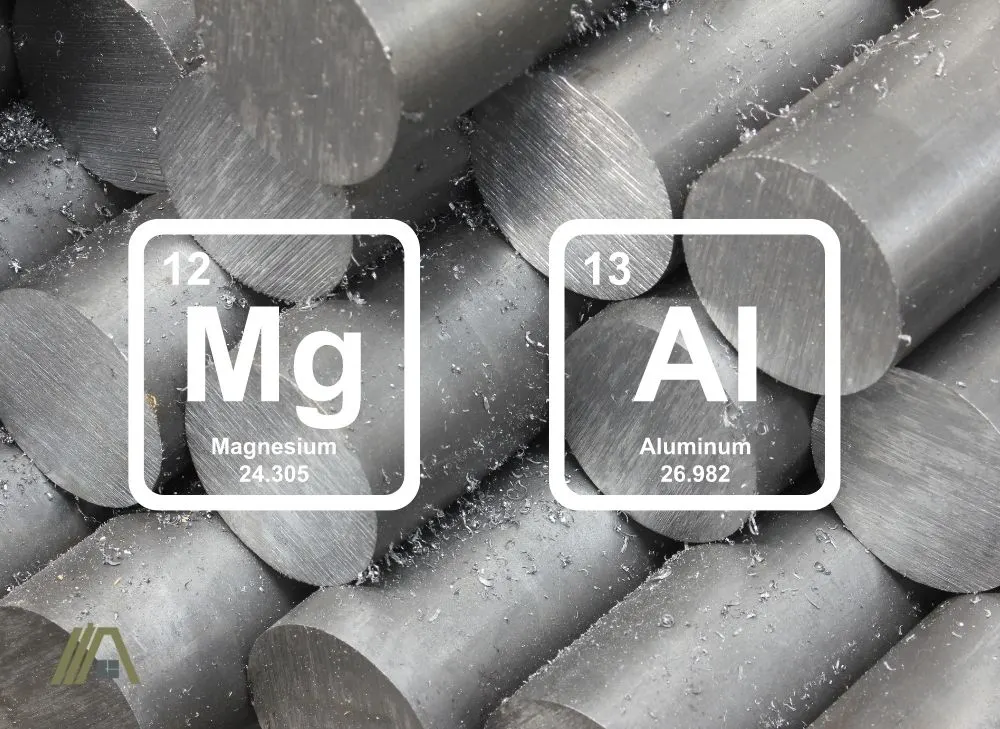When it comes to your water heater, replacing the anode rod is one of the most frequent and important maintenance tasks. Sometimes, however, issues can pop up. Maybe you want to use up a rod you already had on hand, but it doesn’t fit your current heater. Or perhaps there isn’t enough clearance above the heater to remove the old rod.
Both of these scenarios would be fixed if you could just cut the rod. Thankfully, this is not one of those times when the most obvious solution is not a viable option. You can definitely cut the rod! It’s a relatively simple job even for beginners, and we’ve put this guide together to make the process even more accessible.

Sacrificial anode rods can be cut. This is easily done with a hacksaw. Do not use a power tool as magnesium metal is flammable. Magnesium rods will be easier to cut than aluminum rods. Anode rods can be cut before installation and to allow removal after installation with limited clearance above the heater.
Anode Rods Can Be Cut
An anode rod is essentially just a rod of reactive metal around a very thin steel core. They are able to protect your tank because the metal of the rod is much more reactive than the material of your tank, meaning any corrosive elements in the water will attack the rod first.
In this way, the “sacrificial” rod gets its name—it sacrifices itself for your tank’s longevity.
Because of how they are designed, cutting a sacrificial anode rod just shortens the length of it. No damage will be done to its ability to function. It will still work exactly the same.
Only one thing will change, and that’s how long the anode will last.
A longer anode means more material, and that means there’s more “stuff” available to be corroded before your tank becomes a target.
That said, this isn’t necessarily an issue. If you’re cutting down an anode because it won’t fit in your tank, then you’re just creating an anode that’s appropriately sized. Again, it will still function just the same as an anode rod that is already correctly sized.
How to Shorten an Anode Rod
What You Will Need
The best method for cutting an anode rod is to saw it down.
To do this, you will want to use a hacksaw. You will also want a nice pair of work gloves to protect your hands, and safety glasses to protect your eyes.
A bench vise will help you hold the rod stable while cutting through it.
| Tools Needed | View on Amazon |
| AIRAJ 12 inch Hacksaw | View |
| Ironclad Ranchworx Leather Work Gloves | View |
| NoCry Clear Anti-Fog Scratch-Resistant Safety Glasses | View |
| MYTEC Bench Vise | View |

Method: 5 Easy Steps
Safety First
Firstly, shut off your water heater and its power supply, regardless of whether your heater is electrical or gas-powered. You will also want to turn off the cold water supply.
Next, ensure you are wearing your protective gear. Proper gloves and glasses will protect your hands and eyes from any bits of metal while you cut the anode rod.
Remove the Old Anode
Since we’re focusing on how to cut the anode, we won’t go too into depth about how to remove the old one.
If you want an in-depth guide on anode removal, the following video should be helpful.
If you don’t have enough space above your water heater to remove your old anode, we have a section below detailing the process of removing it.
Measure the Anode Rod
To determine how much length to remove, place your new anode rod into your water heater.
Next, measure how many inches the rod sticks out above your water tank, and add two inches to that number.
This new number is how much length you will be cutting off since you don’t want the rod to touch the bottom of your tank.
Since you also want your rod to keep as much length as possible so it lasts longer, taking only two extra inches off is a good rule of thumb.
Mark and Secure the Anode Rod
Take your new anode rod back out of the tank, then use a ruler and a marker to mark off how much length you will be removing from it.
Next, secure your anode rod horizontally so it is easier to cut. This is where the bench vise will come in handy.
You can find some other way to secure the rod if you don’t have a vise, but this is the easiest way to keep it secure so that you can cleanly and easily cut through the rod.
Cut the Excess Off
Use your hacksaw to cut through your anode rod where you have marked it.
Remember to keep your saw perpendicular to the rod, and use both your hands to keep the pressure even. Speaking of pressure, don’t apply heavy pressure while sawing!
The teeth of the saw will eat through the metal with light pressure. Pushing down too hard while sawing may get the teeth “stuck” and make your job harder!
If you want to be sure you are using your hacksaw effectively, this video offers a very thorough guide and many useful tips.
Once you are done, you can install the rod as normal!
Cutting an Anode Rod During Removal
Sometimes, an anode rod is installed inside a water heater before the heater itself is installed. When the heater is placed into an area without much overhead space, this makes it difficult to remove the anode.
Thankfully, you can cut the anode rod into pieces while removing it in order to get it out of the tank.
What You Will Need
Much like with the section above about cutting an anode rod before installing it, you will need a hacksaw and protective equipment for your hands and eyes. You will also need some type of clamps, but vise grips will work better than a bench vise in this scenario.
In order to remove the anode rod, you will also need a breaker bar or impact wrench.
| Tools Needed | View on Amazon |
| CRAFTSMAN Locking Pliers | View |
| DEWALT 20V MAX XR Brushless High Torque Impact Wrench | View |
| MAXPOWER 1/2-Inch and 3/8-Inch Dual-drive 18-Inch Breaker Bar | View |

Method: 5 Easy Steps
Safety First
As always, when working with your water heater, you should shut off the heater itself, its power supply, and the cold water supply.
Since you will be cutting through metal, wear your protective eyewear and your gloves as well. Remember, the anode rod may still be very hot!
Loosen Old Anode and Lift
First, loosen the head of your old anode rod just as you would if you were replacing it.
Since you don’t have enough space to take the rod out completely, simply pull the rod out as far as you can.
Add Clamp to Rod
After pulling the rod out as far as you can, you’ll need something to hold it in place while you work—after all, a hacksaw requires two hands.
You will want to attach your vise grip to the anode rod, just above the hole it slides into.
After attaching your clamp to the rod, you should be able to let it rest on top of the water heater. It should be long enough not to fall in while still holding the top portion of your anode securely outside of the tank.
Cut Above the Clamp
Once you have your clamp securely attached, use your hacksaw to cut through it.
Make sure you cut an inch or two ABOVE the clamp! You shouldn’t have easy access to the portion of rod below the clamp anyways, but this is important enough to mention.
If you cut below the clamp, the bottom portion of the anode rod will simply fall into the tank and will be extremely difficult—if not impossible—to retrieve.
Again, ensure you cut above the clamp so that this doesn’t happen.
Repeat Until Done
After you have sawed through the anode, the top portion should fall off for you to retrieve and dispose of.
To remove the rest of the anode from the tank, simply repeat the last three steps:
Grab the anode, remove your clamp, and lift the remaining length of anode as far out of the tank as you can.
Reattach the clamp to the anode right where it is coming out of the tank, and rest your clamp back over the hole so you have both of your hands free.
Saw through the anode rod above your clamp.
Continue this process as many times as needed, until the entire length of rod is removed.
Is It Easier to Cut an Aluminum or Magnesium Rod?
Both aluminum and magnesium are soft metals and relatively easy to machine, meaning they are also easy to cut through. Magnesium, however, is the easier of the two.

If you wanted to speed up the process of cutting through your anode rods, you might’ve considered using a power tool instead of a hacksaw.
While it’s technically possible to do this, we highly recommend against using a power tool to cut through anode rods.
Magnesium is a highly flammable metal, and magnesium fires are not easily put out. The finer the metal shavings and the higher the temperature, the higher the fire risk. So, manually cutting with a saw is the safest option.
While aluminum is safer, we still recommend against using a power saw to cut through it.
Avoid Having to Cut the Next One
While cutting through anodes is pretty simple, it can be time-consuming.
The easiest way to avoid the effort of having to cut an anode rod again is to simply purchase a shorter, properly sized anode. However, there is another option.
Segmented anodes, also called flexible anodes, also exist. These anode rods are simply made from several shorter sections of anode that are attached to each other via a thin, flexible core.
Because of how they are designed, flexible anodes are able to be easily inserted into a water heater even when little space is available. This makes them a great alternative to traditional anode rods.
Sources
https://www.3erp.com/blog/safety-tips-for-cnc-machining-magnesium-other-flammable-metals/
https://answeregy.com/can/can-you-cut-a-anode-rod.php
https://blog.supplyhouse.com/blue-lightning-flexible-anode-rods-the-right-fix-for-a-tight-space/
https://cementanswers.com/can-you-cut-a-anode-rod/
https://homeguides.sfgate.com/remove-anode-hot-water-heater-41341.html

